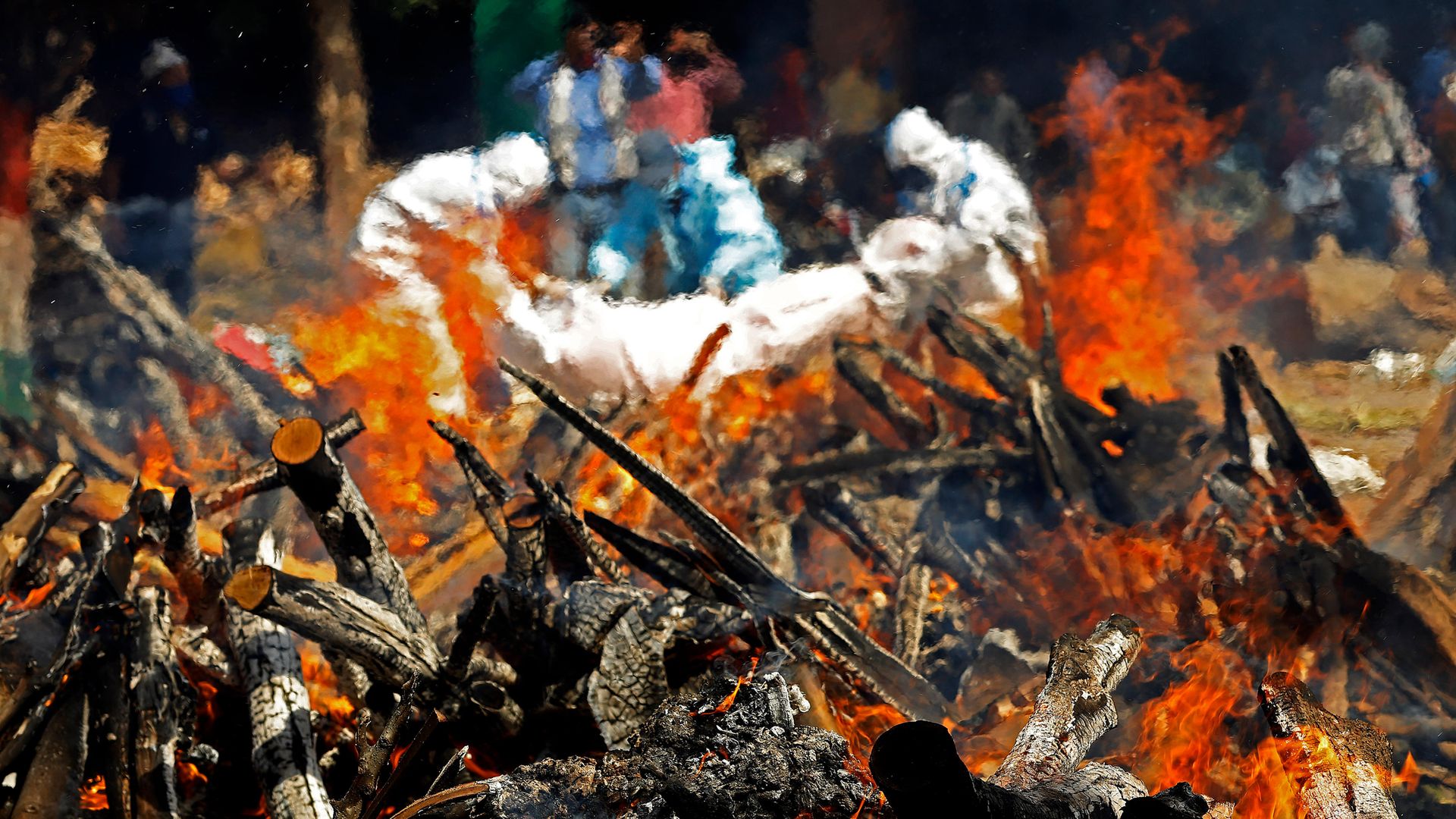
It’s the worst of both worlds – the UK was slow to protect its citizens and now is slow to help others.
No-one knows what’s really going on in India. We don’t know the infection rate. We don’t know the death rate. We don’t know what’s going on with the variant.
The information that comes from the country is not reliable. Everything is masked by confusion and deliberate concealment.
But the information we do have is bad enough. For days now, the official coronavirus infection rates have been over 300,000 a day. Daily deaths are close to the 3,000 mark. In reality, both numbers will be much higher.
Hospitals are full. In Delhi – a region of around 20 million people – they’re turning people away. Even those fortunate enough to get inside are failed from a lack of oxygen supply. Maharashtra and Gujarat in the west, Haryana in the north, and Madhya Pradesh in central India are all facing a shortage.
The nightmare keeps repeating. Hospital authorities warn that oxygen is running out. Sometimes new supplies get there in time. Sometimes they don’t. And then, once again, levels start to dwindle.
The Indian variant, B.1.617, has two particularly concerning mutations: E484Q and L452R. They might be making the virus more infectious and able to escape people’s natural or vaccine immunity, but we just don’t know. India’s sequencing programme is not effective enough for firm conclusions.
We know one thing, though. Narendra Modi, India’s prime minister, bears ultimate responsibility for this crisis. He is one of the nationalist leaders who came to power in recent years, alongside figures like Jair Bolsonaro in Brazil, Donald Trump in the US and Boris Johnson in the UK. His record, like theirs, is one of gross negligence, complacency, ignorance and indifference towards the health and wellbeing of the public.
Modi proclaimed the “endgame” of coronavirus last month. Even as the virus spread, he kept campaigning in state elections, addressing huge rallies and encouraging crowds to come out in massive numbers. The Hindu Kumbh Mela festival, one of the world’s largest religious gatherings, was held in Haridwar. It became a super-spreader event.
India has vaccinated nearly 10% of its population with one dose, but it prioritised exports in a bid for increased diplomatic leverage. More doses have now left the country than been administered within it. Supplies have dwindled.
The country faced an oxygen crisis in the first stage of the pandemic, but did little about it. Bids for new oxygen plants only took place in October – more than eight months after the start of the pandemic. The government instead found time to pursue a £2.16 billion vanity project for new parliament buildings in the capital.
The only area of the pandemic response that Modi has excelled at, or offered any kind of competence at all, is in silencing criticism of the government. He demanded Twitter block tweets that were critical of the authorities’ handling of the crisis – among them messages from politicians and state ministers. The company complied.
For Britain, the message from India is simple but counterintuitive. We are both too soft and too hard.
India announced it was concerned about the variant on March 24. The UK inexplicably put Pakistan and Bangladesh on the travel ban ‘red list’ on April 9, but not India. It took until last week for the prime minister to ban travel, by which time there were over a hundred cases of the variant in the UK.
If we are lucky, it will not be able to escape immunity. But we left it up to chance. Government action needs to be preventive, rather than reactive. And the reason for that lies in the lack of certainty. Many countries are not sequencing properly and we can’t even trust their infection and death rates. The better model – as demonstrated by countries like Australia – is to simply close the borders.
That should be coupled with a radical plan for exporting medical equipment and vaccines, especially to under-developed countries. And yet in this area, we have been too hard.
Downing Street cut the aid budget. It took until Sunday for it to finally confirm it would send medical equipment. We are currently reserving jabs for 20-year-olds in the UK, who are at low risk, when they could be saving the lives of vulnerable people in India.
We’re not alone in this. The European Commission and EU member states have been sluggish, only recently pledging oxygen and medicine. The US dragged its feet before last week offering the raw material for domestic vaccine manufacture. It’s not clear whether it will send the millions of unused AstraZeneca doses which have not been authorised for use in America.
Governments have a primary responsibility to protect their citizens. But we can assist India without putting ourselves at risk. Instead, we have been slow to protect ourselves and slow to offer help. It’s the worst of both worlds.
What do you think? Have your say on this and more by emailing letters@theneweuropean.co.uk
Warning: Illegal string offset 'link_id' in /mnt/storage/stage/www/wp-includes/bookmark.php on line 357
Notice: Trying to get property 'link_id' of non-object in /mnt/storage/stage/www/wp-includes/bookmark.php on line 37







